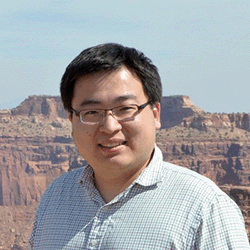Astro Seminar: Renyu Hu : Characterizing atmospheric chemistry in temperate exoplanets

When:
Tuesday, February 9, 2021
4:00 PM - 5:00 PM CT
Where: Online
Audience: Faculty/Staff - Student - Post Docs/Docs - Graduate Students
Contact:
Yas Shemirani
yassaman.shemirani@northwestern.edu
Group: Physics and Astronomy: Astronomy Seminars
Category: Academic
Description:
Abstract: The era of observationally characterizing temperate exoplanets and studying their atmospheric composition has begun. Hubble and JWST already have several candidate planets to study, and TESS may find another handful of temperate planets suitable for follow-up atmospheric observations. These temperate worlds are however very different from Earth – orbiting around a much cooler star, being substantially larger, or having different kinds of atmospheres. To guide observations, I couple atmospheric chemistry models with basic understandings of planetary climate and interior processes to determine the ranges of detectable atmospheric signatures and their implications. Recent progress will be discussed in this talk. I will show that on habitable-zone planets around late M dwarf stars like TRAPPIST-1, a small abundance of CO2 (often required to create a liquid-water ocean surface) would lead to a large abundance of O2 and CO in photochemical equilibrium. Because of this “O2-CO runaway”, habitable environments around late M stars likely entail an O2-rich atmosphere. I will also show that on larger and H-rich temperate planets (such as K2-18 b), photochemical processes based on CH4 and NH3 produce detectable abundances of HCN and N2O but little hydrocarbons in the observable part of the atmosphere. Lastly, I will discuss how future direct imaging observations using a starshade will enable the studies of temperate planets and their atmospheres around nearby stars.
Speaker: Renyu Hu, PhD
Research Scientist, Jet Propulsion Laboratory
Starshade Scientist, NASA Exoplanet Exploration Program
Website: http://web.gps.caltech.edu/~ryh/
Host: Sukrit Ranjan
If you know someone who would be interested in attending this talk, please contact Yas Shemirani (yassaman.shemirani@northwestern.edu) to access the Zoom link.
Keywords: Physics, Astronomy, Astrophysics